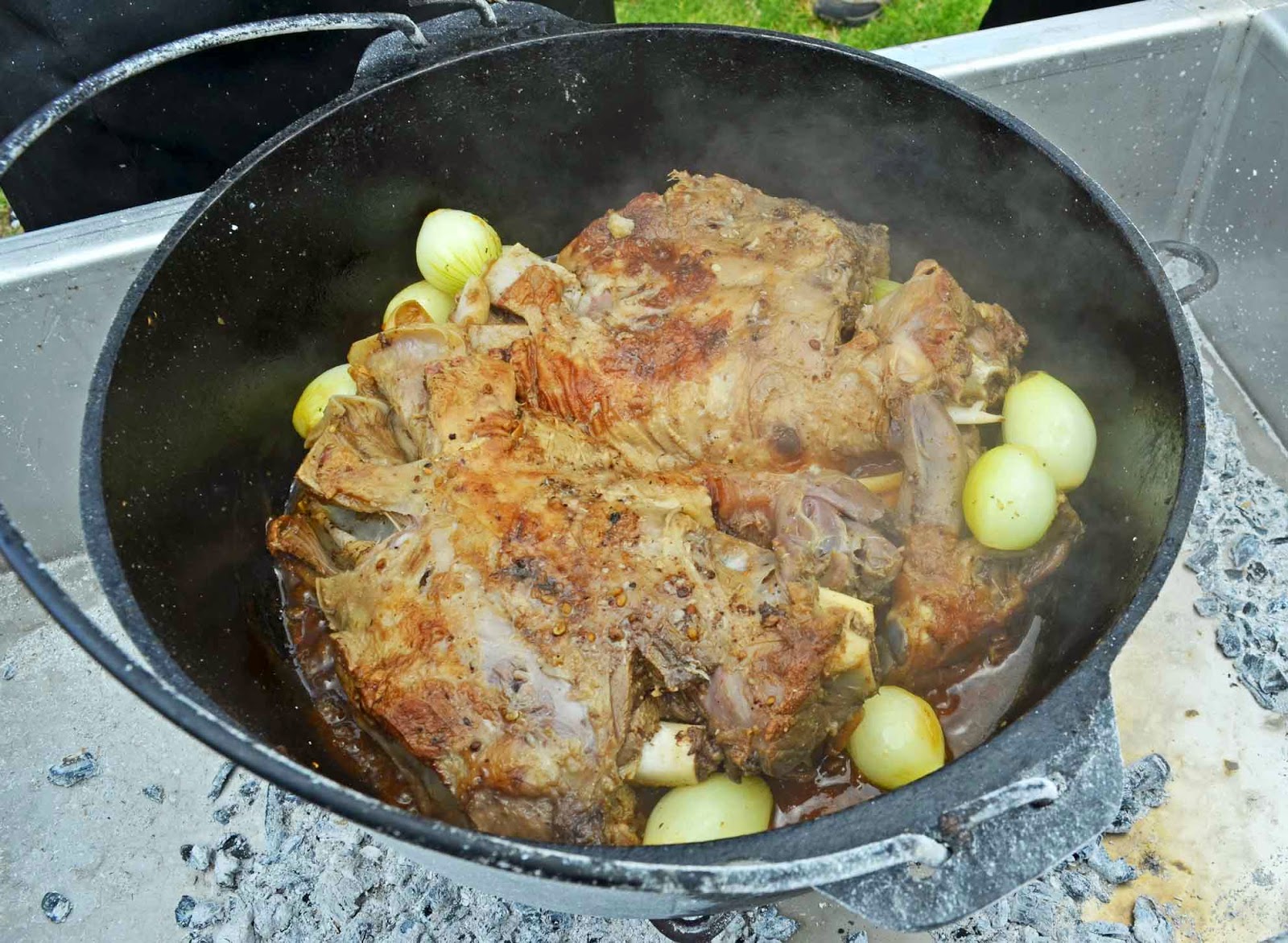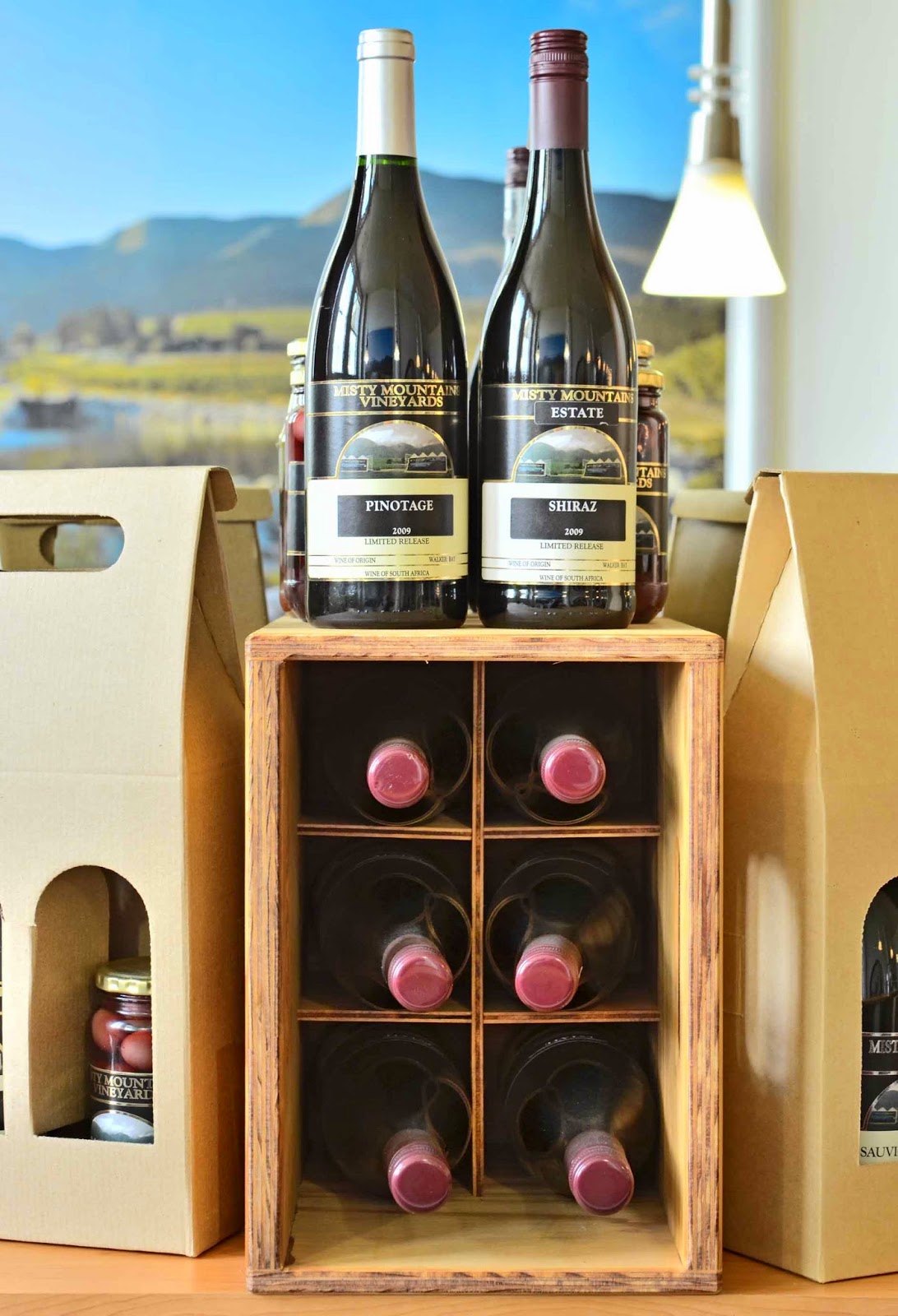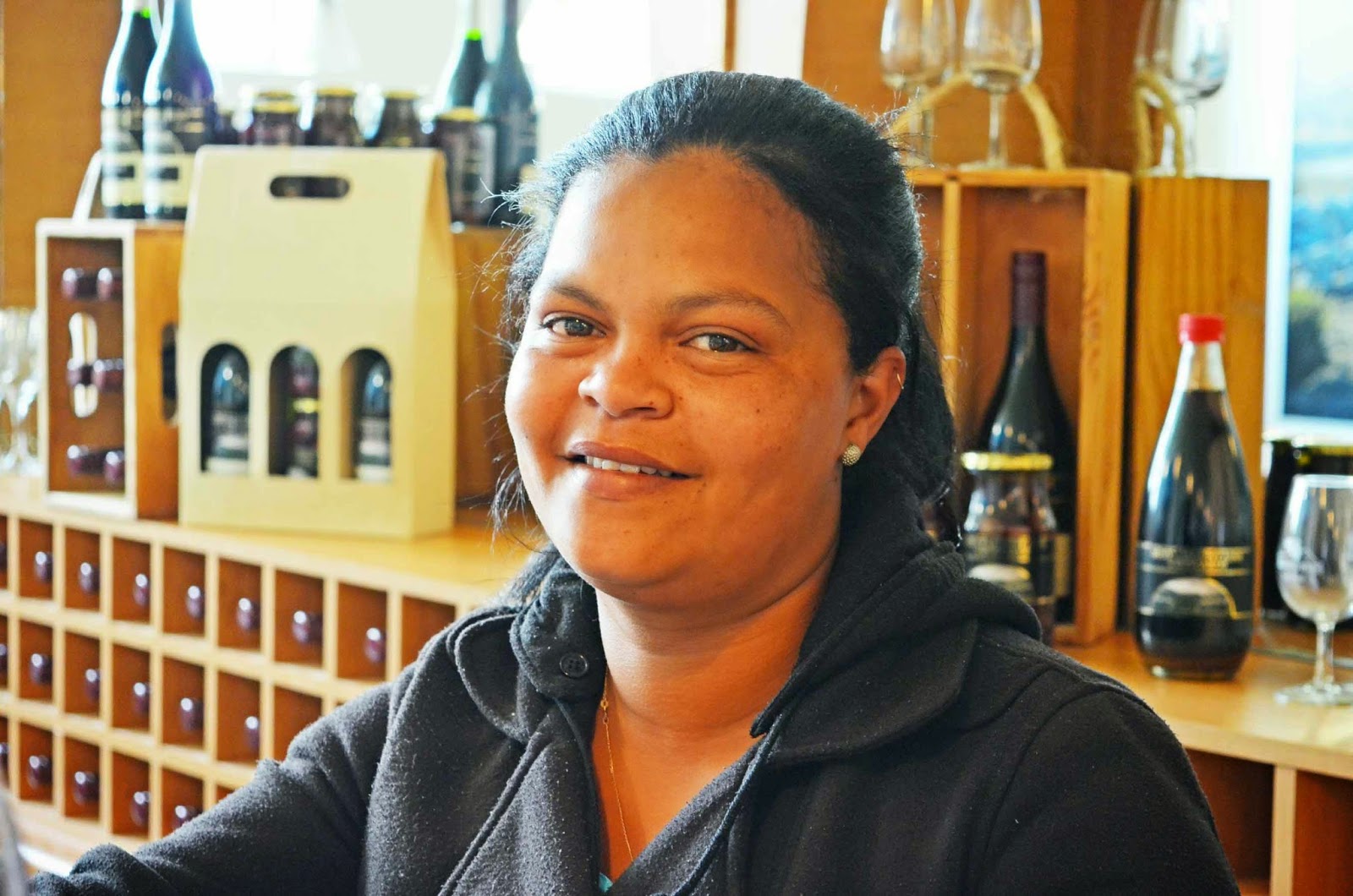Du Toit’s
Kloof vs Muratie annual
It was Du Toitskloof’s turn to host this competition this year and we were taken there in one of their small buses. It is in Rawsonville, just through the Du Toitskloof tunnel, and they had set up a huge marquee and cooks from both farms were all busy cooking the lamb. This year they were to showcase Karoo Lamb and they had to cook some chops on a braai and larger cuts like the shoulder or leg in a pot. It was not great weather but we had a very jolly crowd of supporters and media and lots of wine from both farms flowed. Muratie were quite clever in producing a starter – they put an entire Brie on a tray on the braai till it got lovely and warm and gooey and you could scoop up warm cheese which was then topped with slices of fresh strawberry – unusual but it works. It certainly kept the wolf from the door while we waited for the lamb to cook.
Arrival as the
bad weather sweeps in across the mountains. But the marquee wil protect us.
Lynne is chatting to Pete Goffe Wood and Arnold Tanzer, who was visiting from Johannesburg. Both
are involved with SA Masterchef, Pete as a judge
The Du
Toitskloof ladies get ready for us
Their chops
were seasoned with just salt and pepper and coriander seed
Their shoulder
of lamb in a huge potjie also was just flavoured with salt and pepper and
coriander
A welcome
glass of Du Toitskloof Sauvignon Blanc sparkling wine with a strawberry, some good
biltong and droëwors (dried sausage)
On the Muratie
table, some of the Karoo lamb they are using. A whole shoulder and some
"Saratoga" chops. They also just seasoned with salt and pepper to show the meat
at its best
The whole
Muratie team at their cooking station
The tray of a
whole brie topped with strawberries warming on the braai fire
Their
shoulders of lamb were cooked very simply with onions, salt and pepper and some
water and braised for hours till very soft and tender
Some vegetable kebab
sticks ready for the fire
After the
tasting we were to have a spit roasted lamb for lunch, prepared by a local family.
This is not part of the competition. This is it, turning on its spit
Cutting up the
spit roast lamb and putting it into the gravy with the roast potatoes. This is
a very traditional South African specialty
Tables all
laid in the marquee
Bubbly
chilling
TV is filming
Rijk and
Kim Melck with the producer
Those Saratoga
chops have been seasoned ready for the braai
A selection of wine for drinking
Those chops go
on the coals watched by Neil Pendock and chef Arnold Tanzer
The judges' table
No input
allowed from the professionals, they didn’t even get to vote
Marius Louw of Du Toitskloof gives words of welcome and introduces proceedings
We wait for
the competition food to come to the table
The Du
Toitskloof team
DOC Lamb for
the Karoo. During the event Professor Johann Kirsten Head of the Department of
Agricultural Economics, Extension and Rural Development at the University of
Pretoria told us about how South Africa is trying to value, promote and protect
our special regional foods, starting with Karoo lamb, as products of origin and
quality, as we already do with our wines. It is rather like the European
Commission has done with Welsh Lamb, Gorgonzola Cheese, Parma Ham etc. It means
that identified foods are ethically produced, marked, numbered and this means
their origins can be checked and authenticated.
To explain this further we
quote Wikipedia entry for DOC:
Denominazione di origine controllata ("Controlled designation of origin") is a quality
assurance label for Italian food products, especially wines
and various cheeses (Denominazione di Origine Protetta). It is
modelled after the French AOC. It was instituted in 1963 and
overhauled in 1992 for compliance with the equivalent EU law on Protected
Designation of Origin, which came into effect that year.
The South African project will differ but, basically, it will
be similar. We think this is a wonderful initiative and hope to see lots more
of our special regional foods joining this programme. To learn more look at www.karoomeatoforigin.com
He shows us how wine is classified
And now how Karoo lamb is also classified as Meat of Origin
Red wine is served, the meat is on the way
We listen to the presentation
We are given two corks, one for each farm. Our winner’s cork
will go into the hat
Muratie's serving of half a Saratoga chop and their meltingly
tender and very tasty lamb shoulder from the potjie
Rijk Melck pours us glasses of Ansella
van de Kaap red blend and his wife, Kim, holds a handful of Saratoga chops to
distribute
Nicely cooked, with crisp fat
Mother and son
Du Toitskloof serve their lamb
Paired with their excellent 2010
fruity and spicy shiraz, which goes beautifully with the lamb
The two chefs wait to hear which team
won
And the winners are: Muratie takes the
award this year. They will host the competition next year and pick the dish
that will be cooked by both teams.
Koeksisters (crisp plaited syrup
donuts), profiterols and caramel cream horns for dessert. The traditional South
African Koeksister also needs to become a food or origin! But where would we
put the stamp?
The girls pose for the camera
Maryna Strachan and Pete Goffe Wood
Pete, Maryna and Bernard Kotze of Du Toitskloof
Maryke and Clifford Roberts
And then it is time for a late lunch. Some
more traditional South African food. A carrot and pineapple salad, a tomato
feta and olive salad, a butternut and courgette bake all to go with the spit
roasted lamb
Errieda du Toit of Kokkedoor with Michael
Olivier
Johan de Wet, Rijk Melck and a friend
© John & Lynne Ford, Adamastor & Bacchus 2014
















































































